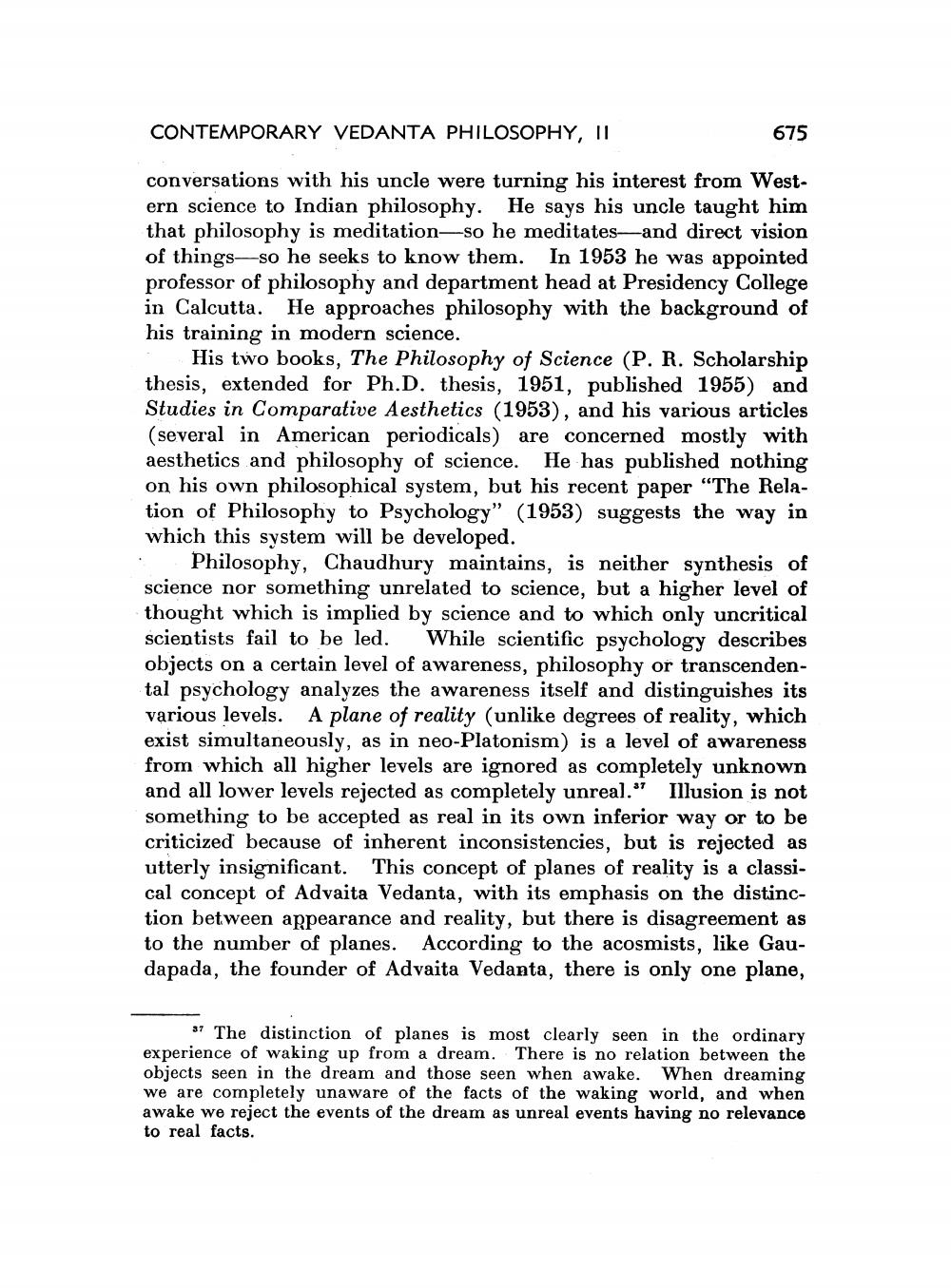________________
CONTEMPORARY VEDANTA PHILOSOPHY, 11.
675
conversations with his uncle were turning his interest from Western science to Indian philosophy. He says his uncle taught him that philosophy is meditation-so he meditates and direct vision of things—so he seeks to know them. In 1953 he was appointed professor of philosophy and department head at Presidency College in Calcutta. He approaches philosophy with the background of his training in modern science.
His two books, The Philosophy of Science (P. R. Scholarship thesis, extended for Ph.D. thesis, 1951, published 1955) and Studies in Comparative Aesthetics (1953), and his various articles (several in American periodicals) are concerned mostly with aesthetics and philosophy of science. He has published nothing on his own philosophical system, but his recent paper "The Relation of Philosophy to Psychology" (1953) suggests the way in which this system will be developed. • Philosophy, Chaudhury maintains, is neither synthesis of science nor something unrelated to science, but a higher level of thought which is implied by science and to which only uncritical scientists fail to be led. While scientific psychology describes objects on a certain level of awareness, philosophy or transcendental psychology analyzes the awareness itself and distinguishes its various levels. A plane of reality (unlike degrees of reality, which exist simultaneously, as in neo-Platonism) is a level of awareness from which all higher levels are ignored as completely unknown and all lower levels rejected as completely unreal." Illusion is not something to be accepted as real in its own inferior way or to be criticized because of inherent inconsistencies, but is rejected as utterly insignificant. This concept of planes of reality is a classical concept of Advaita Vedanta, with its emphasis on the distinction between appearance and reality, but there is disagreement as to the number of planes. According to the acosmists, like Gaudapada, the founder of Advaita Vedanta, there is only one plane,
37 The distinction of planes is most clearly seen in the ordinary experience of waking up from a dream. There is no relation between the objects seen in the dream and those seen when awake. When dreaming we are completely unaware of the facts of the waking world, and when awake we reject the events of the dream as unreal events having no relevance to real facts.




